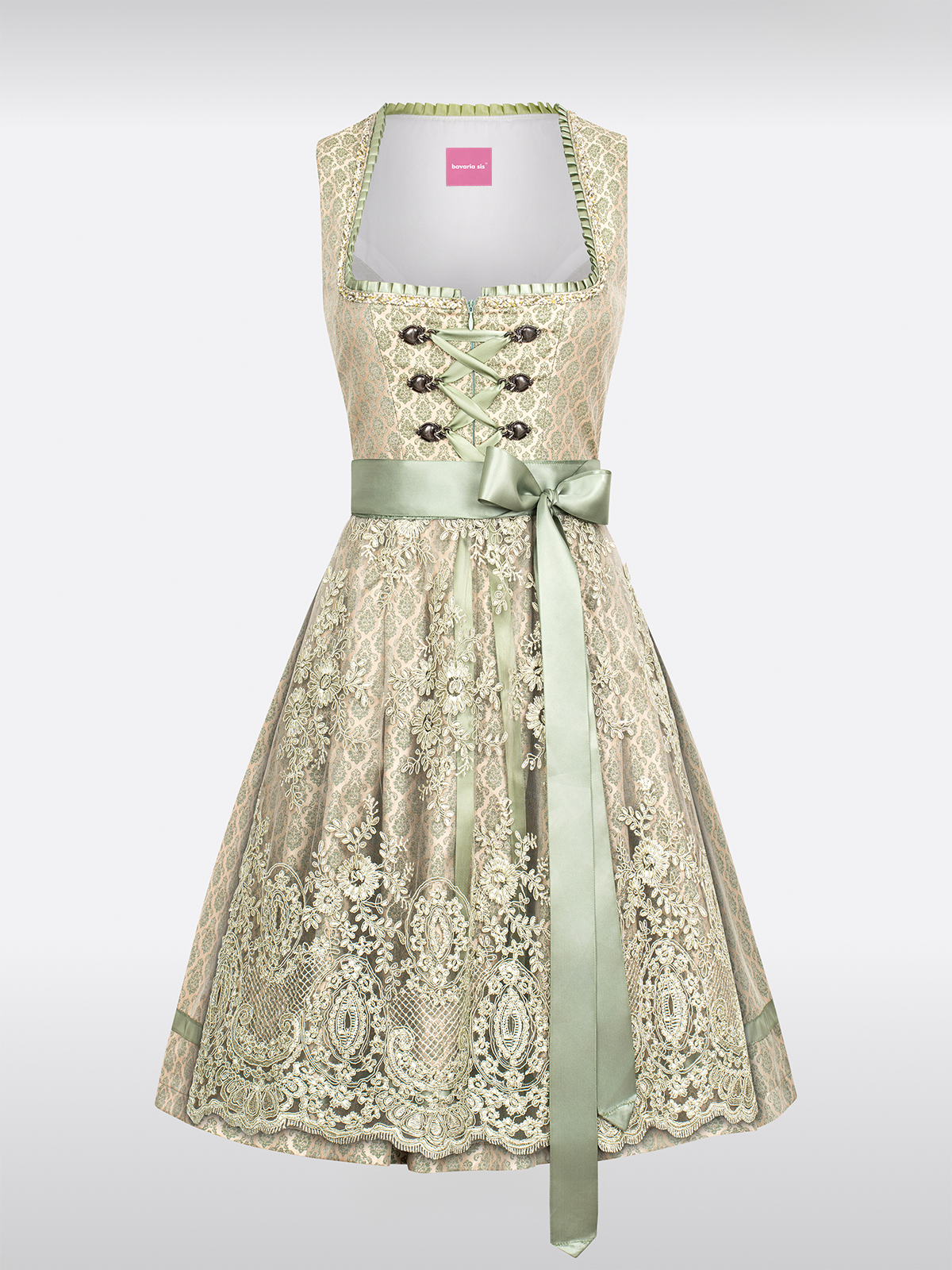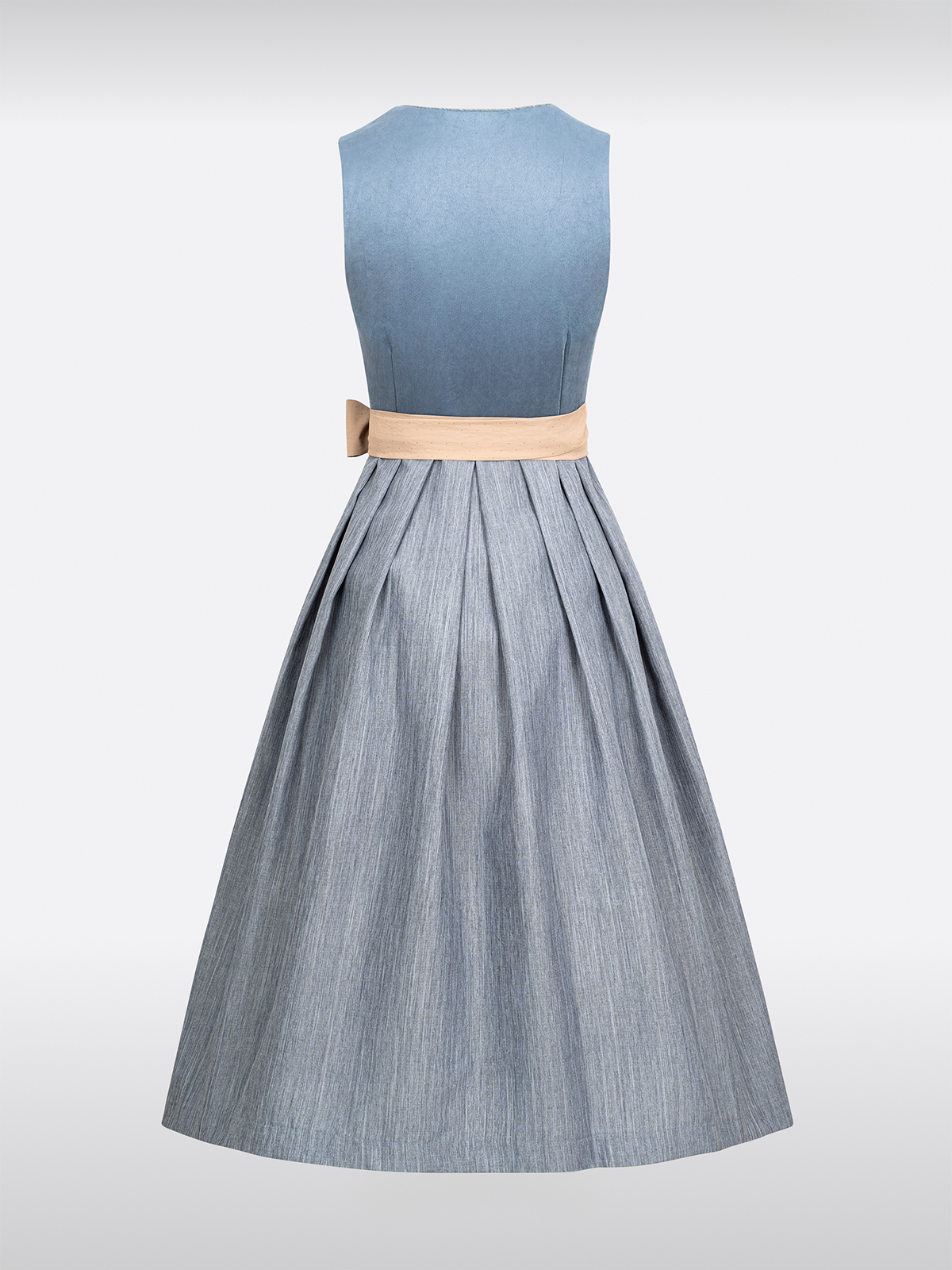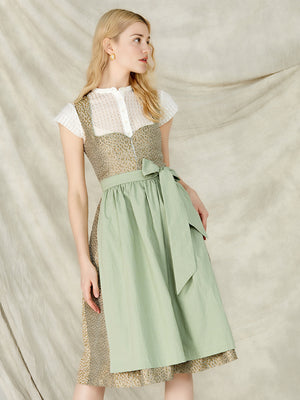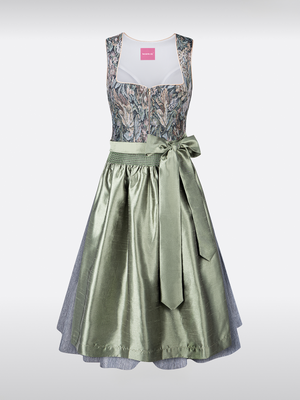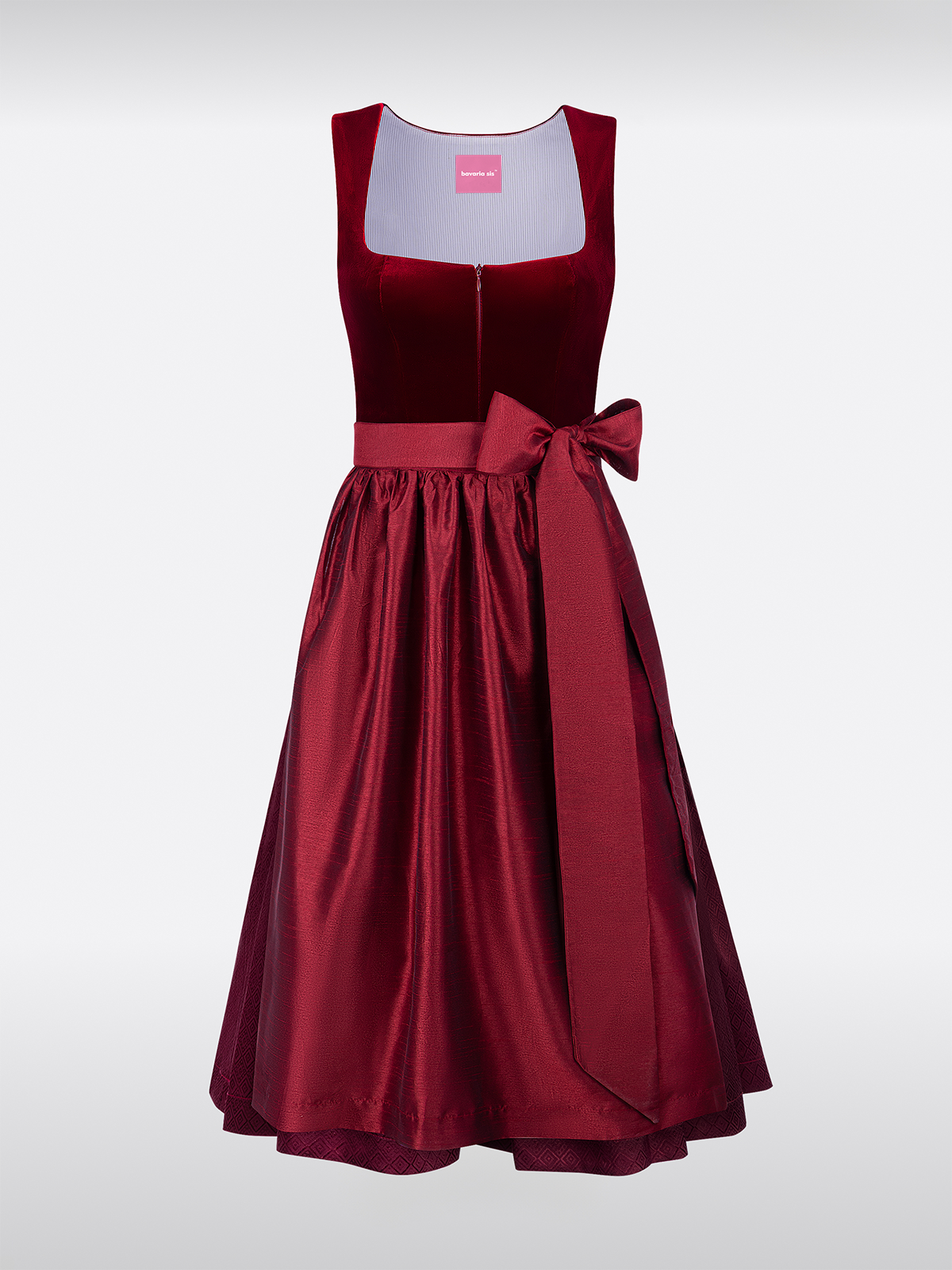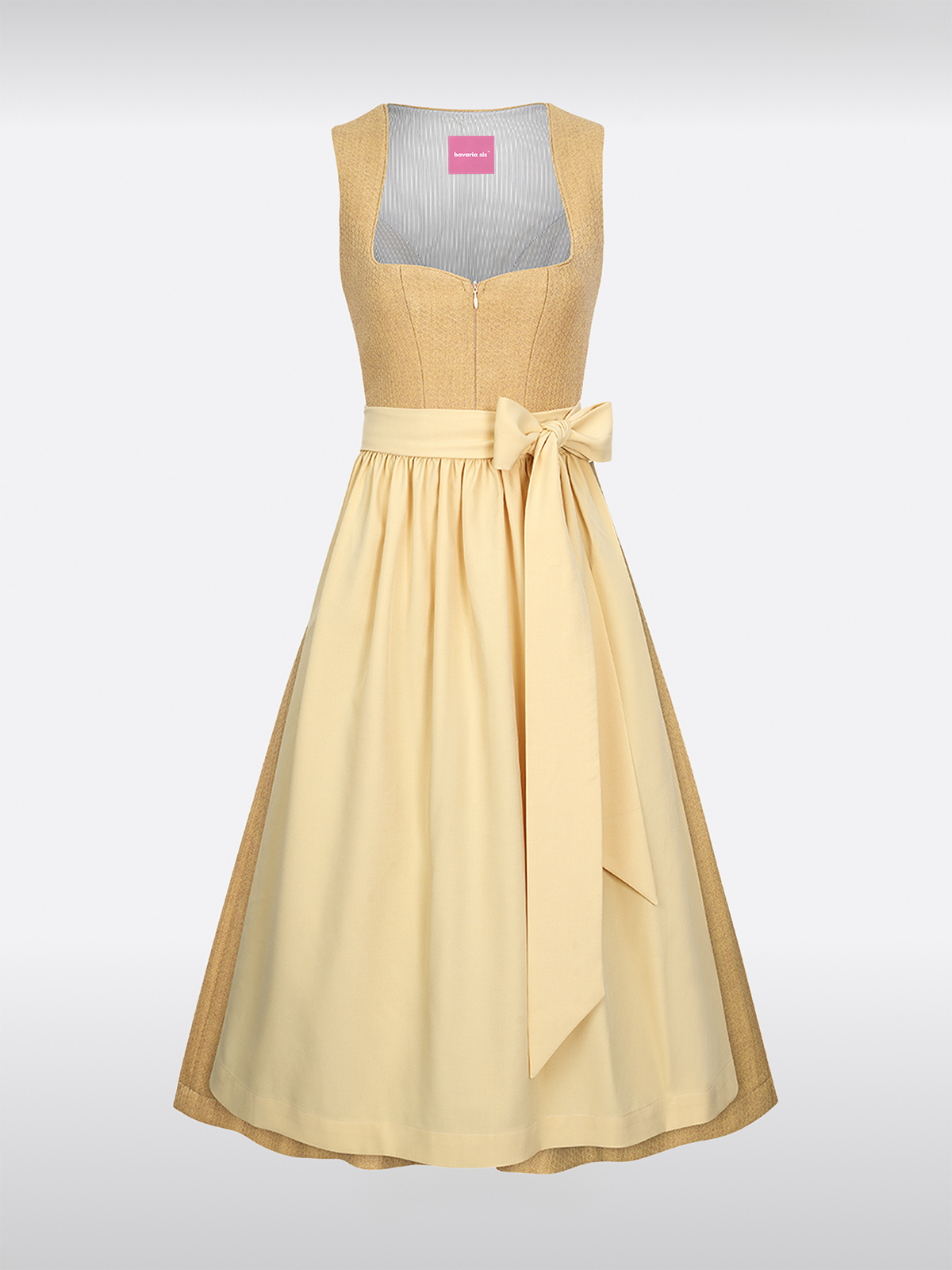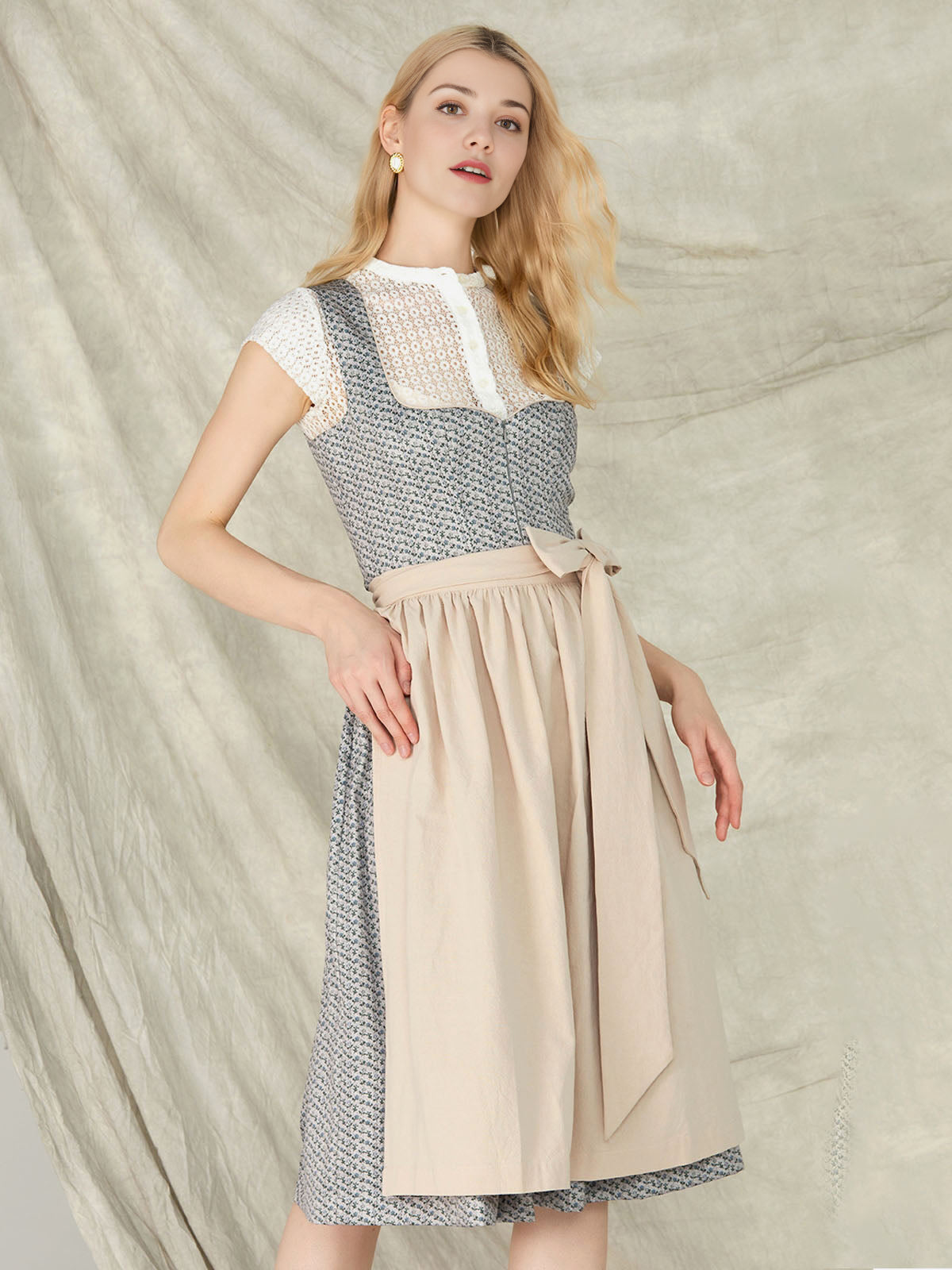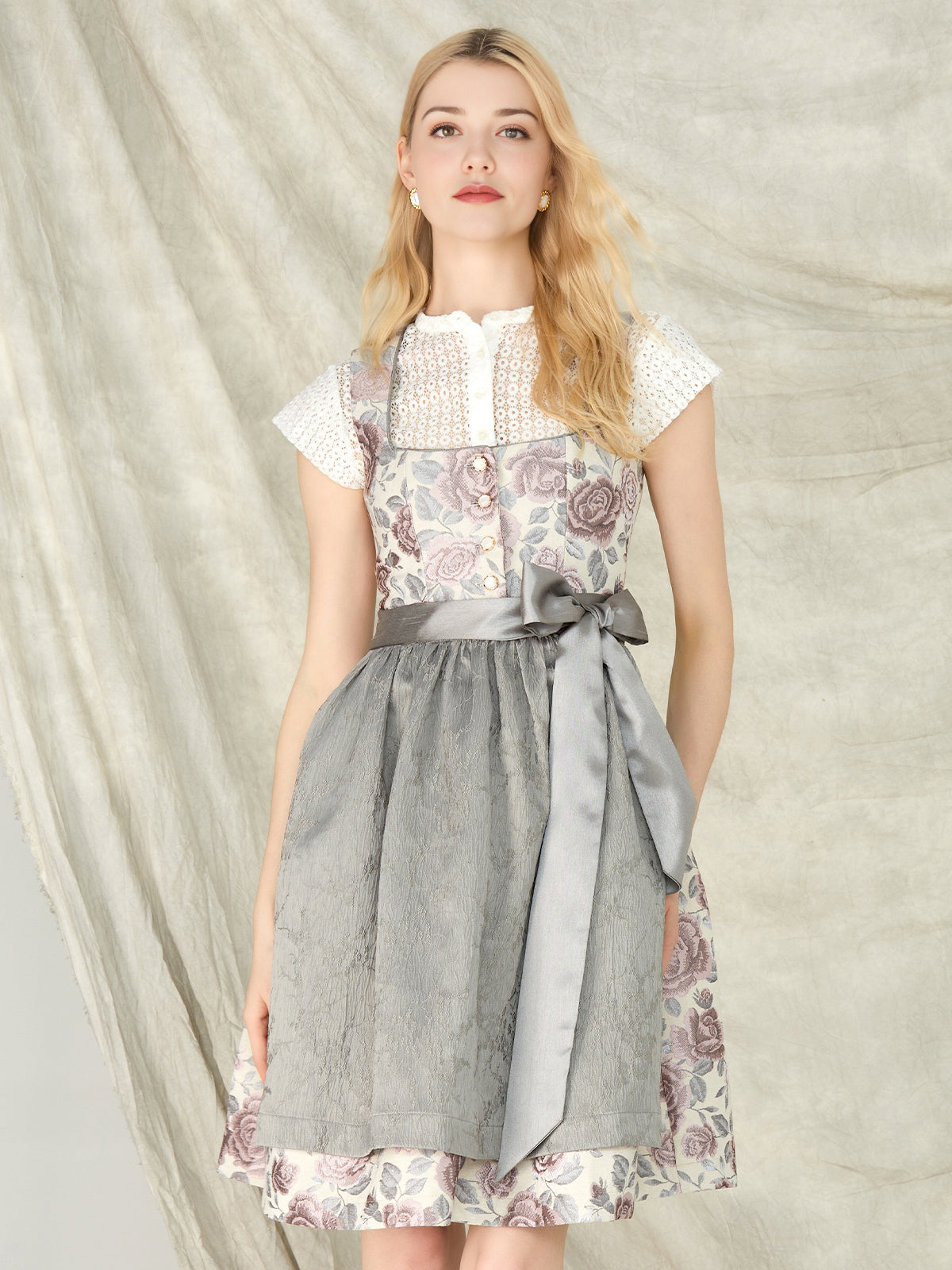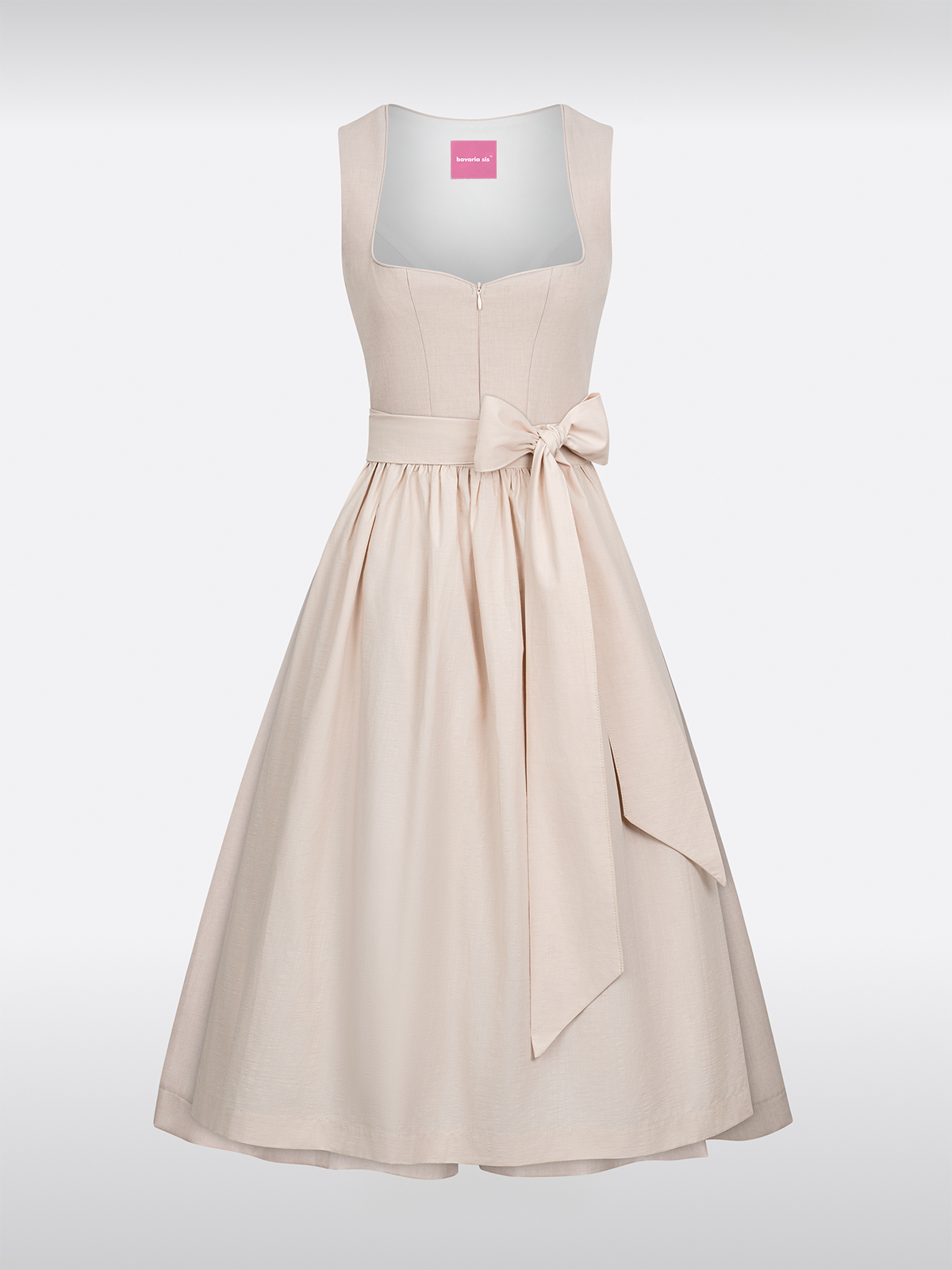Introduction
The dirndl midi Swings between tradition and avant-garde – a dress that once made the work of Alpine farmers easier, but now conquers the world's catwalks. In this journey through three centuries, we reveal how light blue dirndl from the village square to the dressing rooms of the global elite – and why the dirndl blouses have long since become a symbol of cultural resilience.
I. 17th–19th centuries: From necessity to aristocratic fantasy
Originally conceived as a practical work garment for farmers' wives in Salzburg, the dirndl combined functionality with subtle aesthetics. Its characteristic design – dirndl blouses With puffy sleeves, tight-fitting bodices, and wide skirts, it served to improve occupational safety in dairy farming and field work. It wasn't until 1870 that it underwent its first metamorphosis:
- Local Elite Adopts It: Bavarian noblemen adopted the dress as a summer outfit, simplified the cut and added like lace trim.
- Color code: Light blue dirndl symbolized purity and became the favorite color of middle-class women.
- Practical luxury: Cotton fabrics were replaced by silk, bodices were given bone reinforcements – a status symbol against the backdrop of industrializing cities.
II. 1933–1945: Dirndl as a propaganda weapon
Nazi ideology instrumentalized the dress as a "purely Aryan heritage":
- Cut changes: Skirt lengths were shortened to knee length (ideological: "promoting female curves as a German heritage").
- Color policy: Light blue dirndl became the obligatory uniform for Nazi women's organizations.
- Symbolic battle: The ribbon was repurposed – left = unmarried, right = married – to control life plans.
forecast: This political instrumentalization casts a shadow over the modern debate – how far can tradition go without degenerating into dogma?
III. 1980s–2010s: The Wallnöfer Revolution
Elsbeth Wallnöfer's campaign for the "denazification of the dirndl" marked the turning point:
- Material innovation: Denim and linen versions replaced heavy fabrics.
- Modern icons: Karl Lagerfeld’s Chanel shows in 2005 led dirndl midi silhouettes.
- Prada 2019 SS: Miuccia Prada revolutionized design with asymmetric cuts and neoprene inserts – proof of its timeless relevance.
IV. 2025: Dirndl in the digital age
Today, the light blue dirndl the "Old Modern Aesthetics":
- SEO Trends: Searches for "dirndl blouses" increased by 47% in 2024 (Semrush data).
- Sustainability: Austrian labels are experimenting with organic linen and recycled lace.
- Gender fluidity: Unisex versions with oversized bodices revolutionize traditional codes.

